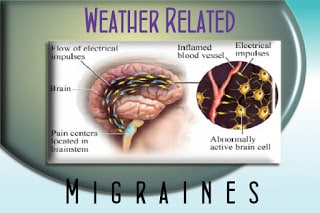
Migraines and Complementary Remedies
Table of Contents
What Causes Headaches?
A headache is a general name for pain or discomfort in the head, scalp, or neck. The most common type of headaches are likely to be caused by tight muscles in the shoulders, neck, scalp, and jaw and are called tension headaches.
Factors which might contribute to tension headaches are stress, depression, anxiety, bad posture, staying in one position for a long time, clenching one’s jaw etc.
Migraines: Symptoms And Trigger Factors
A migraine, on the other hand, is a common type of headache that may occur with symptoms such as nausea, vomiting, or sensitivity to light. In many people, a throbbing pain is felt only on one side of the head.
It is believed that a migraine attack begins in the brain and involves nerve pathways and neurotransmitters like serotonin, and endorphins. The changes affect blood flow in the brain and surrounding tissues.
Migraine attacks may be triggered by:
Alcohol, stress and anxiety, certain odors or perfumes, loud noises or bright lights, caffeine withdrawal, changes in hormone levels during a woman’s menstrual cycle or with the use of birth control pills, changes in sleep patterns, exercise or other physical stress, missed meals, smoking or exposure to smoke.
Certain foods like meats containing nitrates such as bacon, hot dogs, salami and cured meats; processed, baked or marinated foods, as well as foods that contain monosodium glutamate (MSG), chocolate, nuts, peanut butter, and dairy products, foods containing tyramine, including red wine, aged cheese, smoked fish, chicken livers, figs, and certain beans, and fruits like avocado, banana, or citrus fruit are also active migraine triggers.
Typical migraine symptoms include moderate to severe pain, usually confined to one side of the head, but switching in successive migraines, pulsing and throbbing head pain, increasing pain during physical activity, inability to perform regular activities due to pain, nausea, vomiting, increased sensitivity to light and sound.
In some cases, there may be a warning symptom called an “aura”, a common term for a group of symptoms which may involve a temporary blind spot, blurred vision, eye pain, seeing stars or zigzag lines, and tunnel vision before the actual migraine begins.
Complementary Remedies For Migraines
You can reduce the severity and the frequency of the migraine attacks by using some complementary remedies according to your doctor or medical practitioner advice. (This only is an informative list of remedies and not a prescription advice, always refer to a professional).
Nutraceuticals
- Tanacetum Partenium (150 mg)
- Hypericum Perforatum – St John’s Wort (150 mg)
- Harpagophytum Procumbens – Devil’s Claw (150 mg)
- Salix Alba (100 mg)
- Crataegus (75 mg)
- Chamomilla Recutita (50 mg)
- Melilotus Officinalis (50 mg)
- Cynara Scolymus (100 mg)
- Melatonin (3 to 5 mg in the evening)
Homeopathic Remedies
- Ignatia Amara (4CH)
- Gelsenium (4CH)
- Iris Versicolor (4CH)
- Spigelia Anthelmia (3CH)
- Bryonia Alba (3CH)
- Sepia (5CH)
- Menyanthes Trifoliata (5CH)
- Ignatia (4X)
- Gelsenium (12X)
- Melilotus Officinalis (1X)
- Tabacum (9X)
- Sepia (9X)
- Tanacetum Partenium (3X)
- Beta Endorphin (6X)
- Melatonin (4C)
- Serotonin (6X)
Bach Flower Remedies
- Impatiens
- Beech
- Olive
- Rock Water






